Choose your municipality
There are several municipalities connected with The Green Menu, check whether your municipality is participating or choose for the national page.
Choose you menu card
There are several different menu cards. Choose a buildingtype down below and instantly start with the sustainable options!

Most companies and homes heat with gas. This is a fossil fuel and emits CO2. Saving energy to heat rooms and water can therefore be very beneficial for the environment. It can also be great for your wallet. Gas costs usually account for about 2/3 of the total energy bill. In addition, the energy tax for gas will increase, while for electricity, it will decrease. So it's smart to look for alternatives to the gas-fired central heating boiler.
A solar thermal roof is actually a combination of solar panels and a solar boiler. This PVT roof produces hot water and electricity from solar energy. Panels on the roof convert sunlight into electricity and ensure that solar heat is exchanged with water in the storage tank inside. The heated water can be used for tap water and for heating your building with the help of a heat pump.
A solar thermal roof is actually a combination of solar panels and a solar boiler. This PVT roof produces hot water and electricity from solar energy. Panels on the roof convert sunlight into electricity and ensure that solar heat is exchanged with water in the storage tank inside. The heated water can be used for tap water and for heating your building with the help of a heat pump.
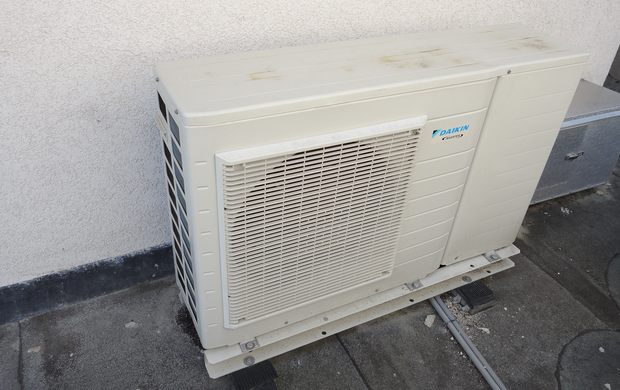
An (electric) air heat pump extracts energy from the outside air which can be used for heating tap water and for space heating. Electricity is used instead of gas. It is possible to go all-electric or install a hybrid system. In a all-electric system, the heat pump, in combination with a buffer tank, generates all the necessary heat for both heating and domestic hot tap water. You can also opt for a hybrid heat pump, whereby the heat pump only generates heat if it is above 4˚C outside. The all-electric heat pump only works in combination with a low-temperature delivery system, such as underfloor heating. It is important that your building is well insulated before you consider switching to low-temperature heating and a heat pump.
The air heat pump has an outside element and a smaller interior element. The outside element can be placed at various locations outside the building, taking into account possible noise production (not near windows) and whether the outside element is visible from the public space. The interior element is placed next to the boiler together with the buffer tank.
With a water-saving shower head that creates a mist, you save more than 50% on water consumption.
An (electric) air heat pump extracts energy from the outside air which can be used for heating tap water and for space heating. Electricity is used instead of gas. It is possible to go all-electric or install a hybrid system. In a all-electric system, the heat pump, in combination with a buffer tank, generates all the necessary heat for both heating and domestic hot tap water. You can also opt for a hybrid heat pump, whereby the heat pump only generates heat if it is above 4˚C outside. The all-electric heat pump only works in combination with a low-temperature delivery system, such as underfloor heating. It is important that your building is well insulated before you consider switching to low-temperature heating and a heat pump.
The air heat pump has an outside element and a smaller interior element. The outside element can be placed at various locations outside the building, taking into account possible noise production (not near windows) and whether the outside element is visible from the public space. The interior element is placed next to the boiler together with the buffer tank.
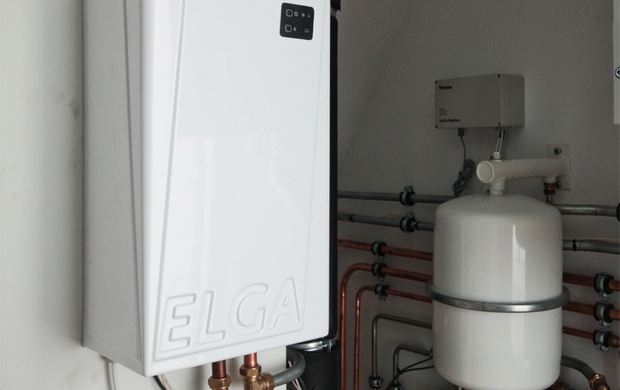
If the heat demand is so high that it is not possible to heat with just a heat pump, a hybrid heat pump offers the solution. If it is really cold outside, below 5 degrees Celsius, it is difficult for the air heat pump to extract heat from the outside air. In the case of a hybrid heat pump, a gas-fired boiler will then switch on. Ask the installer whether your existing central heating system is suitable for this or opt for a new system with a heat pump and central heating boiler in one. The hybrid heat pump also uses a central heating system to heat tap water, so no buffer tank is required. It is also not necessary to switch to low-temperature heating, such as underfloor heating. Insulation and ventilation are required because otherwise, electricity consumption will become too high. For this reason, it is also interesting to explore whether you can combine the heat pump with solar panels. Most of the year, the heat pump will be in operation, which will save a lot of gas. And the costs of a hybrid heat pump are lower than those of other heat pump systems.
Keep in mind that air heat pumps have an external part. These must be carefully placed due to noise production, for example not near windows. It is possible to place a casing around the external part for noise insulation.
If the heat demand is so high that it is not possible to heat with just a heat pump, a hybrid heat pump offers the solution. If it is really cold outside, below 5 degrees Celsius, it is difficult for the air heat pump to extract heat from the outside air. In the case of a hybrid heat pump, a gas-fired boiler will then switch on. Ask the installer whether your existing central heating system is suitable for this or opt for a new system with a heat pump and central heating boiler in one. The hybrid heat pump also uses a central heating system to heat tap water, so no buffer tank is required. It is also not necessary to switch to low-temperature heating, such as underfloor heating. Insulation and ventilation are required because otherwise, electricity consumption will become too high. For this reason, it is also interesting to explore whether you can combine the heat pump with solar panels. Most of the year, the heat pump will be in operation, which will save a lot of gas. And the costs of a hybrid heat pump are lower than those of other heat pump systems.
Keep in mind that air heat pumps have an external part. These must be carefully placed due to noise production, for example not near windows. It is possible to place a casing around the external part for noise insulation.
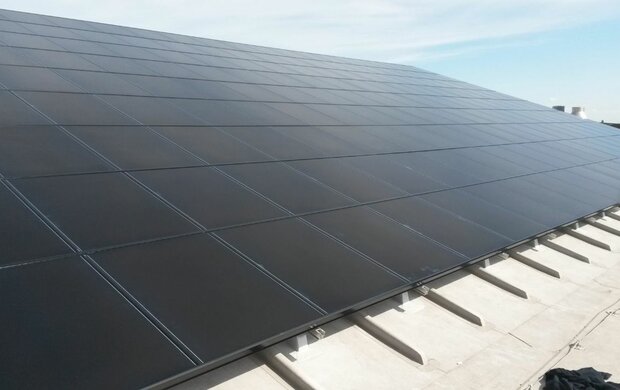
Heat pumps can extract heat from various sources. Well-known sources are air, soil and water. A less known source is solar heat. PVT (Photo-Voltaic-Thermal) panels or solar collectors can be used to extract solar heat and ambient heat. The absorbed heat is then increased by the heat pump for low-temperature heating. A solar heat pump is particularly suitable for buildings with a large roof surface area. A large absorption surface area is required to extract enough heat even on cloudy days. Cooling is only possible at night with this system.
Heat pumps can extract heat from various sources. Well-known sources are air, soil and water. A less known source is solar heat. PVT (Photo-Voltaic-Thermal) panels or solar collectors can be used to extract solar heat and ambient heat. The absorbed heat is then increased by the heat pump for low-temperature heating. A solar heat pump is particularly suitable for buildings with a large roof surface area. A large absorption surface area is required to extract enough heat even on cloudy days. Cooling is only possible at night with this system.
A ventilation heat pump is an interesting solution for large buildings where there is no balanced ventilation yet but there is mechanical extraction. The ventilation heat pump extracts heat from the extracted ventilation air and brings this heat into the central heating system, thus saving energy and lowering your energy bill. The ventilation heat pump is installed in the place of the existing ventilation box. The capacity of this type of system is usually low, which is why this system is often used in a hybrid setup with a central heating boiler.
A ventilation heat pump is an interesting solution for large buildings where there is no balanced ventilation yet but there is mechanical extraction. The ventilation heat pump extracts heat from the extracted ventilation air and brings this heat into the central heating system, thus saving energy and lowering your energy bill. The ventilation heat pump is installed in the place of the existing ventilation box. The capacity of this type of system is usually low, which is why this system is often used in a hybrid setup with a central heating boiler.

"Wij hebben een HR-warmtewisselaar, met warmtepomp en zeer efficiënt luchtbehandelingsysteem. Hierdoor is de luchtkwaliteit zeer hoog, met voor Europese normen lage CO2, fijnstof en schimmel waarden. Ons warmte-terug-win-rendement is 83%!"
Marc Heijdeman, Directeur Fort ’t Hemeltje BV
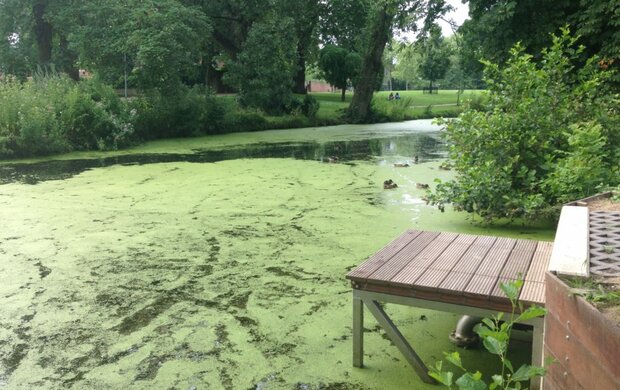
Most forts are surrounded by a moat. Heat can be extracted from this surface water in the summer. A heat pump increases the temperature, making it suitable for low-temperature heating. The investment is high compared to an air heat pump. This heating system is particularly suitable for forts where the heat demand is high and you also want to cool. In combination with a thermal energy storage system, heat can be stored and the temperature in the water remains balanced. Prevent life in the surface water from being disturbed. A benefit is that cooling and making the water flow has a positive effect on surface water quality and can prevent blue-green algae growth and botulism.
Most forts are surrounded by a moat. Heat can be extracted from this surface water in the summer. A heat pump increases the temperature, making it suitable for low-temperature heating. The investment is high compared to an air heat pump. This heating system is particularly suitable for forts where the heat demand is high and you also want to cool. In combination with a thermal energy storage system, heat can be stored and the temperature in the water remains balanced. Prevent life in the surface water from being disturbed. A benefit is that cooling and making the water flow has a positive effect on surface water quality and can prevent blue-green algae growth and botulism.

"De doelgroep van de Gedenkplaats maakt bewuste keuzes en denkt na over de ‘footprint' die ze tijdens hun leven maken en over dat wat ze achterlaten als ze er zelf straks niet meer zijn. Dit uit zich bij de gedenkplaats o.a. in biologische horeca, afvalscheiding & recycling en natuurlijk de wens tot energieneutraal zijn. Samen met het een team van specialisten bekijken we alle mogelijke scenario’s, zoals het gebruik van de oude waterkelders als energiebron."
Marian van Weert, Ondernemer Gedenkplaats Fort Nigtevecht
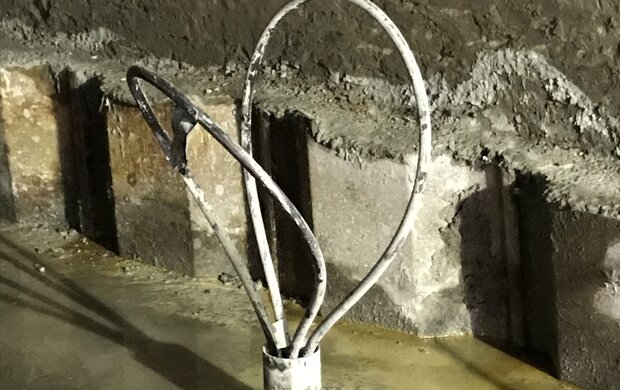
A ground source heat pump uses thermal energy from the ground. At 55 to 100 metres below ground level, the constant ground temperature of 12 °C is extracted with a heat exchanger. A heat pump increases this thermal energy to a suitable temperature for low-temperature heating, maximum 55 degrees. A ground source is most suitable if you also use it to cool the building, for the purpose of regenerating the ground source over summer. This heat pump requires good building insulation, ventilation and possibly a new form of heating in your building, such as underfloor heating. The investment is higher than with an air source heat pump, especially because of the construction of the ground source. Keep in mind that you need a permit for this and that the garden must be accessible. With monuments, this can often be challenging.
Is your foundation in need of replacement? It is possible to use a foundation pile as a vertical ground exchanger. To convert the ground energy into heat, a heat pump is then connected. This eliminates the need to build a separate ground source, thus saving you considerable investment costs.
Did you know that there are different types of ground sources? Closed and open sources. Make sure you are properly informed. Closed sources are possible horizontally, vertically and in surface water. Open sources are available in mono, recirculation and doublet versions. The latter is also called thermal energy storage.
A ground source heat pump uses thermal energy from the ground. At 55 to 100 metres below ground level, the constant ground temperature of 12 °C is extracted with a heat exchanger. A heat pump increases this thermal energy to a suitable temperature for low-temperature heating, maximum 55 degrees. A ground source is most suitable if you also use it to cool the building, for the purpose of regenerating the ground source over summer. This heat pump requires good building insulation, ventilation and possibly a new form of heating in your building, such as underfloor heating. The investment is higher than with an air source heat pump, especially because of the construction of the ground source. Keep in mind that you need a permit for this and that the garden must be accessible. With monuments, this can often be challenging.
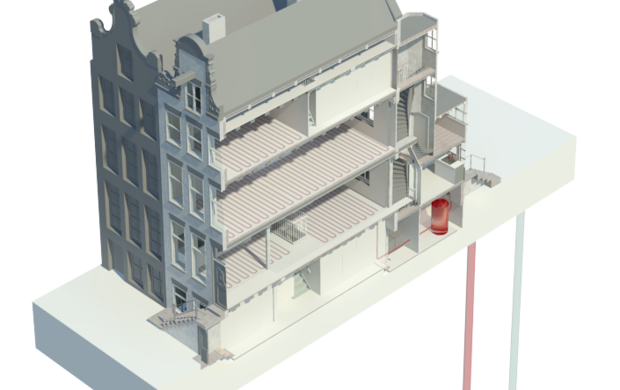
A ground-coupled heat exchanger is basically a storage for heat (or cold) deep in the ground. The system lies between 55 and 100 metres below ground level, and uses the constant ground temperature of 12 degrees Celsius. In summer, this temperature can be used to cool. In winter, 12 degrees Celsius is relatively warm and can therefore heat the water. A heat pump increases the temperature to make it suitable for low-temperature heating. A ground-coupled heat exchanger system is particularly suitable for heating at a district level or for large buildings. In other situations, such as for a residential home, an ordinary heat pump with a ground source is more suitable.
A ground-coupled heat exchanger is basically a storage for heat (or cold) deep in the ground. The system lies between 55 and 100 metres below ground level, and uses the constant ground temperature of 12 degrees Celsius. In summer, this temperature can be used to cool. In winter, 12 degrees Celsius is relatively warm and can therefore heat the water. A heat pump increases the temperature to make it suitable for low-temperature heating. A ground-coupled heat exchanger system is particularly suitable for heating at a district level or for large buildings. In other situations, such as for a residential home, an ordinary heat pump with a ground source is more suitable.

"We hebben bij de vernieuwing van ons theater een warmtepomp met een warmte-koudeopslag (WKO) toegevoegd en de installatie aangesloten op ons museum. Het museum dat in principe gekoeld moet worden en het theater dat verwarmd moet worden, wisselen dankzij de warmte-koudeopslag daar slim in uit.”
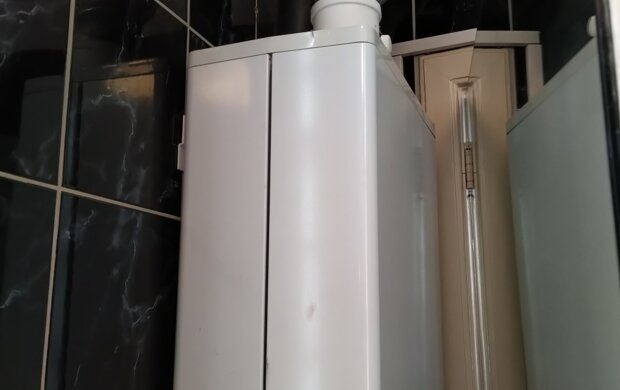
Most people opt for a Condensing boiler when their old central heating boiler needs replacing. On average, a boiler will last fifteen years, during which time boilers will have become more energy efficient. Modern condensing boilers use condensation heat and can therefore achieve a high efficiency. In addition, modern boilers can modulate and are better adjustable, so that they do not run at full speed with a small heat demand. With a new boiler, you can save up to 20% on the gas bill, which means you earn back your investment within a few years.
Most people opt for a Condensing boiler when their old central heating boiler needs replacing. On average, a boiler will last fifteen years, during which time boilers will have become more energy efficient. Modern condensing boilers use condensation heat and can therefore achieve a high efficiency. In addition, modern boilers can modulate and are better adjustable, so that they do not run at full speed with a small heat demand. With a new boiler, you can save up to 20% on the gas bill, which means you earn back your investment within a few years.
An alternative to an open fireplace or an ordinary wood-burning stove is a pellet stove. The pellet stove only heats the room in which the stove is located. There is also a central heating pellet stove, which is a variant of the pellet stove that can be connected to the central heating system, such as the boiler or a buffer tank for hot water. The central heating pellet stove can therefore heat water for several rooms. The fuel of a (central heating) pellet stove consists of wood pellets, which are small rods of sawdust and wood waste, a cheaper fuel than gas. The pellet reservoir will need to be refilled regularly. For both variants of the pellet stove, place a particulate filter in the chimney or flue gas duct to capture particulate matter.
Apply a particulate filter at the chimney or flue gas duct if you opt for a pellet boiler or stove. This will capture particulate matter that is harmful to health and the environment. In order to maintain the operation of the filter, it is important to clean the filters periodically.
A heat pump is cleaner than a pellet stove.
An alternative to an open fireplace or an ordinary wood-burning stove is a pellet stove. The pellet stove only heats the room in which the stove is located. There is also a central heating pellet stove, which is a variant of the pellet stove that can be connected to the central heating system, such as the boiler or a buffer tank for hot water. The central heating pellet stove can therefore heat water for several rooms. The fuel of a (central heating) pellet stove consists of wood pellets, which are small rods of sawdust and wood waste, a cheaper fuel than gas. The pellet reservoir will need to be refilled regularly. For both variants of the pellet stove, place a particulate filter in the chimney or flue gas duct to capture particulate matter.
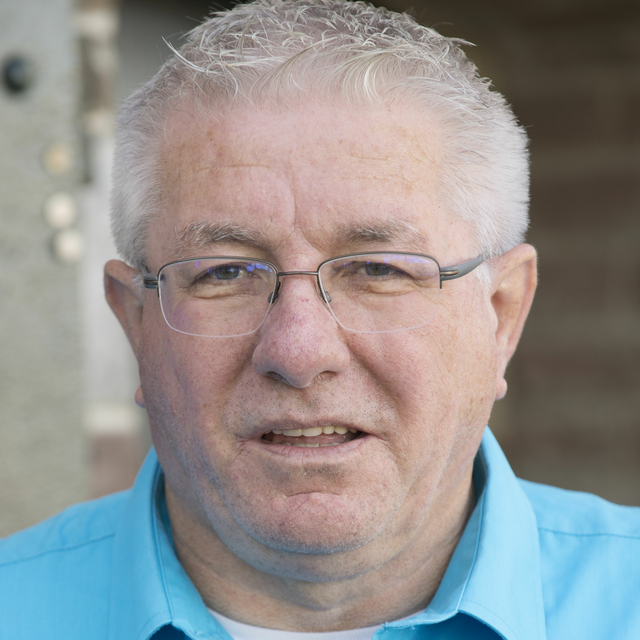
"We hebben het dak op het fort waterdicht gemaakt. Daarnaast gebruiken we een grote houtsnipperkachel om het fort én water van de douches te verwarmen. We hebben een groen energiecontract en zijn CO2 neutraal."
Koos Lucas, Eigenaar B&B Fort Bakkerskil
Do you have residual wood from your garden or park, or from the surrounding area? This is more than just a waste stream and can be used as biomass. There are various types of wood-fired heating systems suitable for residual wood. For example, a wood gasifier can heat with logs, sawdust and large shreds. Well-dried wood shavings from felling, pruning and sawdust from your area can be used in a woodchip installation. A biomass boiler produces heat by burning this waste. The heat released is used to heat water for central heating. An indirectly fired boiler can also be used to heat tap water.
Is a biomass boiler actually sustainable? Burning wood releases CO2. The idea behind this is that trees can absorb this CO2. The trees later serve as fuel again, thus creating a sustainable chain. This is questionable because CO2 is still released into the air and burning is much faster than trees grow back. In any case, pay close attention to the origin of the fuel.
Do you have residual wood from your garden or park, or from the surrounding area? This is more than just a waste stream and can be used as biomass. There are various types of wood-fired heating systems suitable for residual wood. For example, a wood gasifier can heat with logs, sawdust and large shreds. Well-dried wood shavings from felling, pruning and sawdust from your area can be used in a woodchip installation. A biomass boiler produces heat by burning this waste. The heat released is used to heat water for central heating. An indirectly fired boiler can also be used to heat tap water.
Is a biomass boiler actually sustainable? Burning wood releases CO2. The idea behind this is that trees can absorb this CO2. The trees later serve as fuel again, thus creating a sustainable chain. This is questionable because CO2 is still released into the air and burning is much faster than trees grow back. In any case, pay close attention to the origin of the fuel.
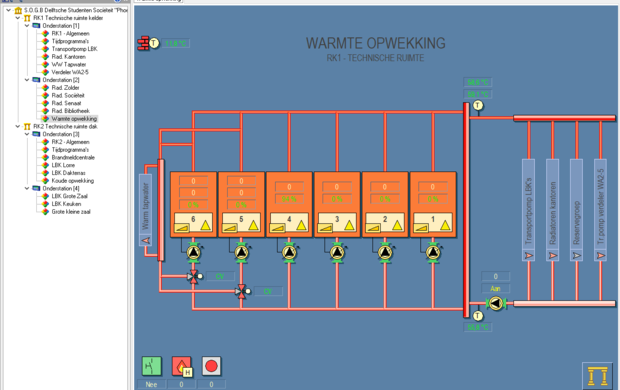
Een gebouwbeheersysteem wordt steeds vaker ingezet om de installaties optimaal te kunnen gebruiken, centraal aan te sturen en goed aan te laten sluiten op de energievraag en het energieverbruik in een grotere panden. Naast een goede zonering in het pand, is het interessant om een monitoringsysteem aan te leggen. Dit biedt beter inzicht in het energiegebruik en stimuleert de gebruiker om bewuster energie te gebruiken.
Een gebouwbeheersysteem wordt steeds vaker ingezet om de installaties optimaal te kunnen gebruiken, centraal aan te sturen en goed aan te laten sluiten op de energievraag en het energieverbruik in een grotere panden. Naast een goede zonering in het pand, is het interessant om een monitoringsysteem aan te leggen. Dit biedt beter inzicht in het energiegebruik en stimuleert de gebruiker om bewuster energie te gebruiken.
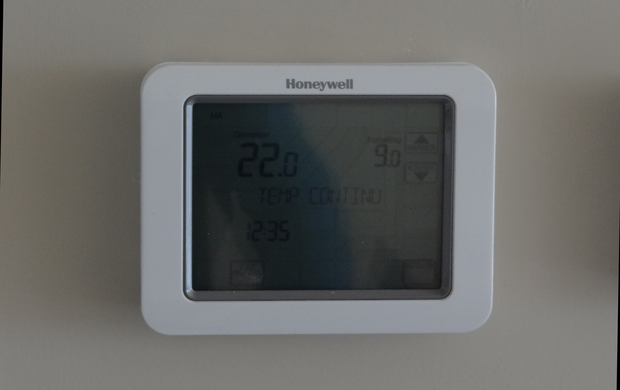
A smart thermostat can help you to heat your building in a more energy-efficient way. Depending on the type of thermostat, the smart thermostat automatically adapts to your living rhythm and wishes. Choose a thermostat that suits you best. This way, you can control the heating remotely or the thermostat is self-learning. Some thermostats can even show you the energy consumption, just like an energy consumption manager. Or they read the meter readings of the smart meter automatically. This way, a smart thermostat helps you heat more efficiently.
A smart thermostat can help you to heat your building in a more energy-efficient way. Depending on the type of thermostat, the smart thermostat automatically adapts to your living rhythm and wishes. Choose a thermostat that suits you best. This way, you can control the heating remotely or the thermostat is self-learning. Some thermostats can even show you the energy consumption, just like an energy consumption manager. Or they read the meter readings of the smart meter automatically. This way, a smart thermostat helps you heat more efficiently.
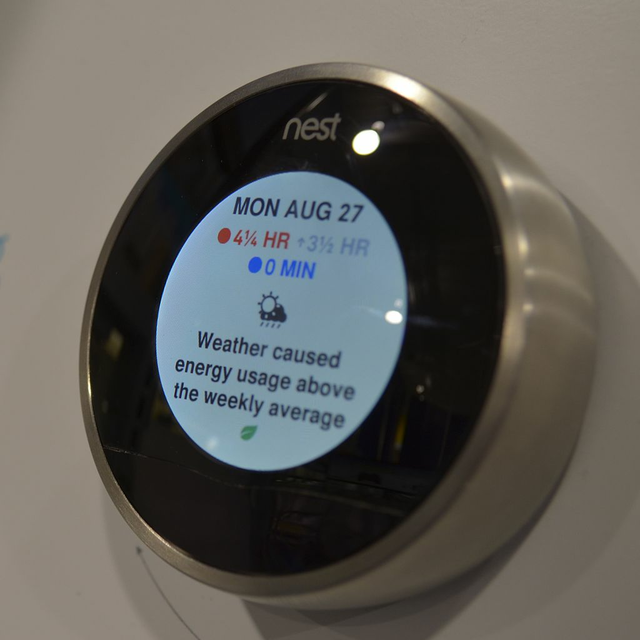
Heating systems are only set properly if they are adjusted to all available internal and external heat sources, such as people, lighting, computers and the sun. Night-time reduction is one of the resulting measures. With night-time reduction, the temperature is lowered. This ensures that there are no large fluctuations, and therefore large peaks, in the system. Especially for larger buildings, it is useful to set a setpoint and a night-time reduction. This allows the entire building to be set correctly at once (although preferences can still be adjusted manually). The lighting and heating/cooling will be lowered or switched off during absence and this can save a lot of money and energy!
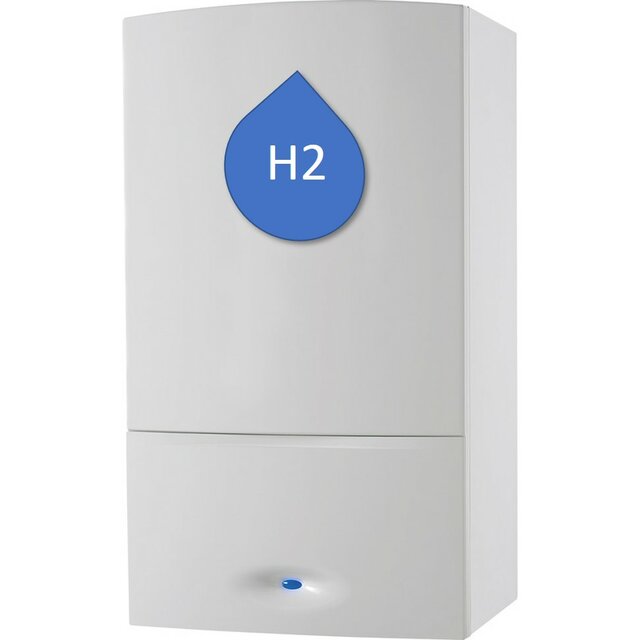
As an alternative to the gas boiler, the hydrogen boiler is emerging. In this new boiler, hydrogen is used for the generation of hot tap water and central heating water. The big advantage of this system is that this is done at a high temperature (so no extensive building insulation values or low temperature heating is required) and the residual product consists of water. This makes the hydrogen boiler itself a sustainable replacement of the gas boiler. An important side note is that hydrogen is produced on a large scale from natural gas. The alternative production method, electrolysis, is not yet widespread and also very inefficient. Transport is also not optimal yet. Distribution ideally goes via the existing gas pipelines, but up to now the hydrogen has to be supplied in tanks. Finally, it is difficult to predict when and whether hydrogen will become accessible for home use. The use of hydrogen boilers has so far been limited to a few pilots.
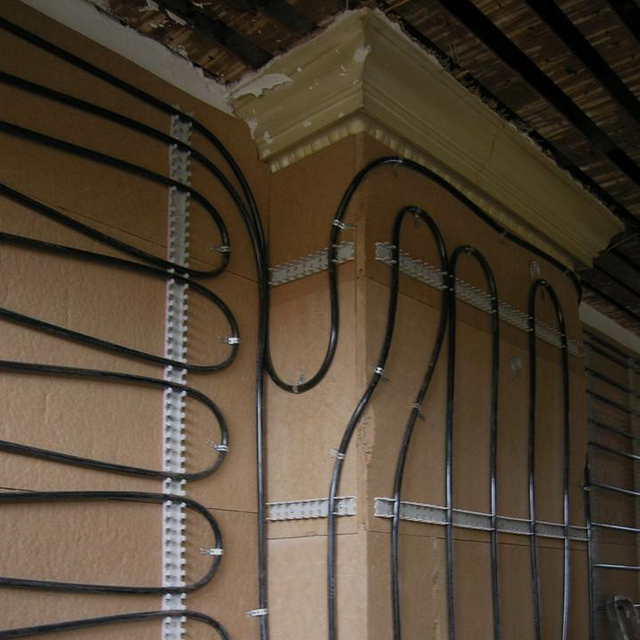
A technique that has been used since 2011 for energy savings in heating is the active insulation of exterior facades. This involves pumping heat from the ground of approx. 10-12˚C to heat the exterior walls. This heat is further heated to 20˚C in winter by a heat pump. The existing heating can be retained. In summer, the 10-12˚C water is used for cooling. The system can be applied to the exterior or interior facade with prefabricated elements, in which the piping is pre-installed.